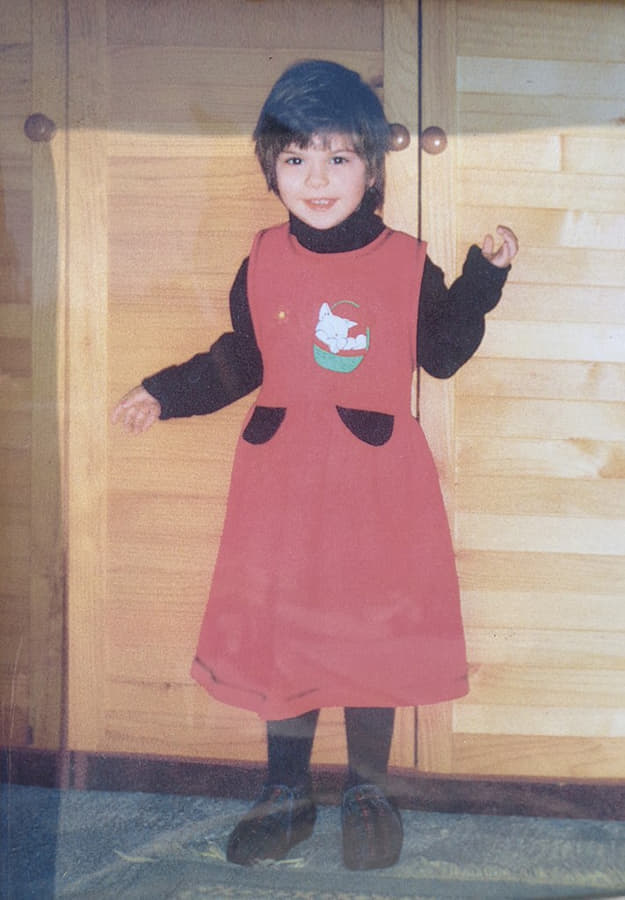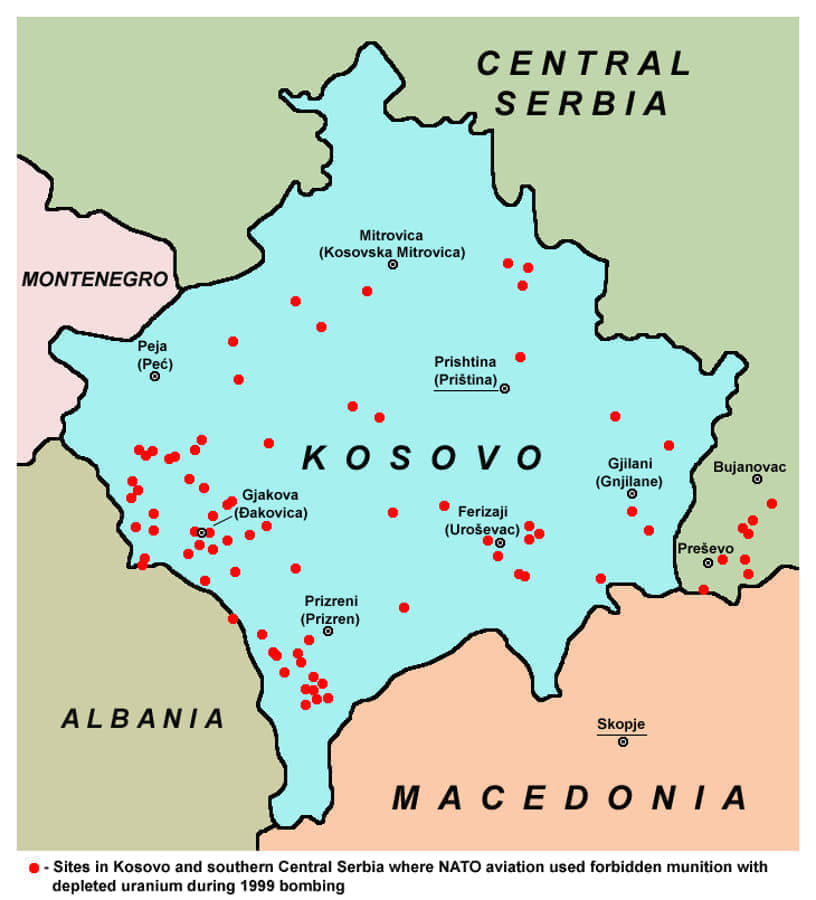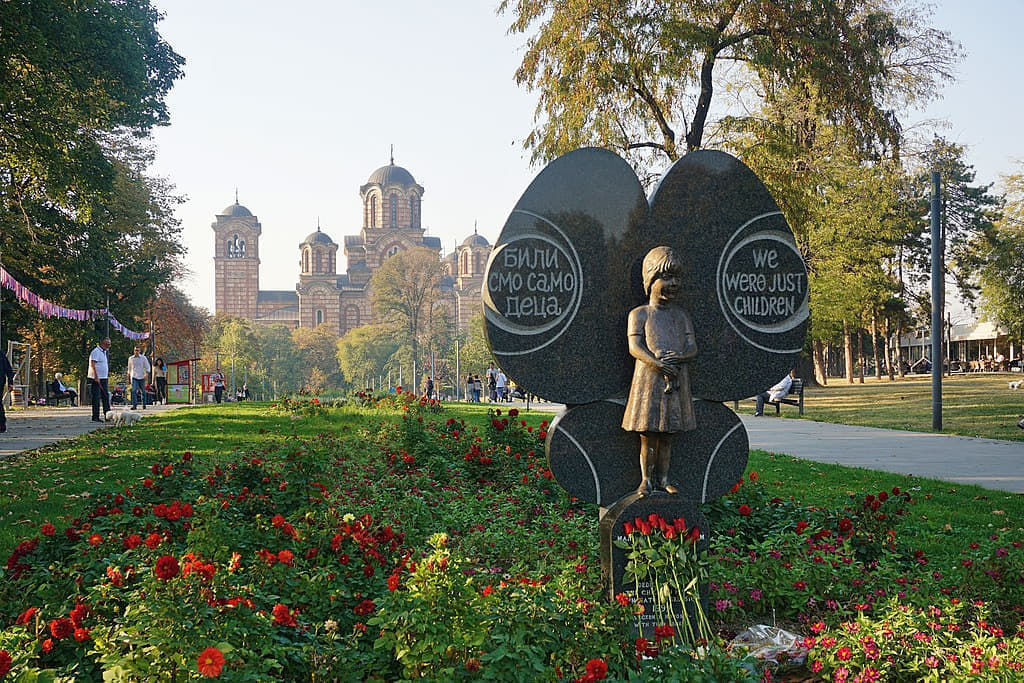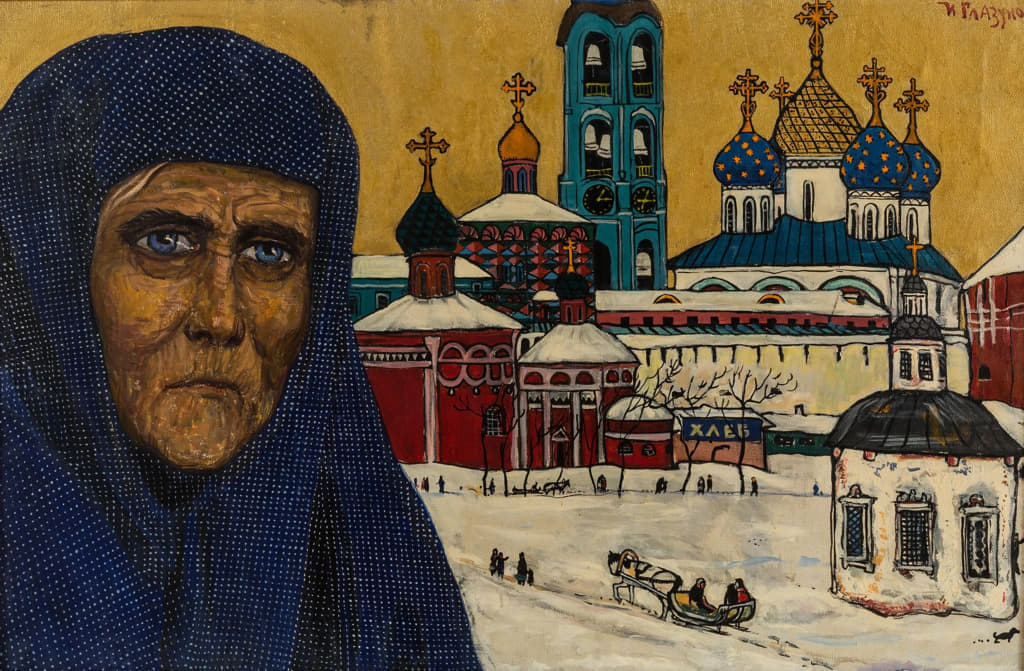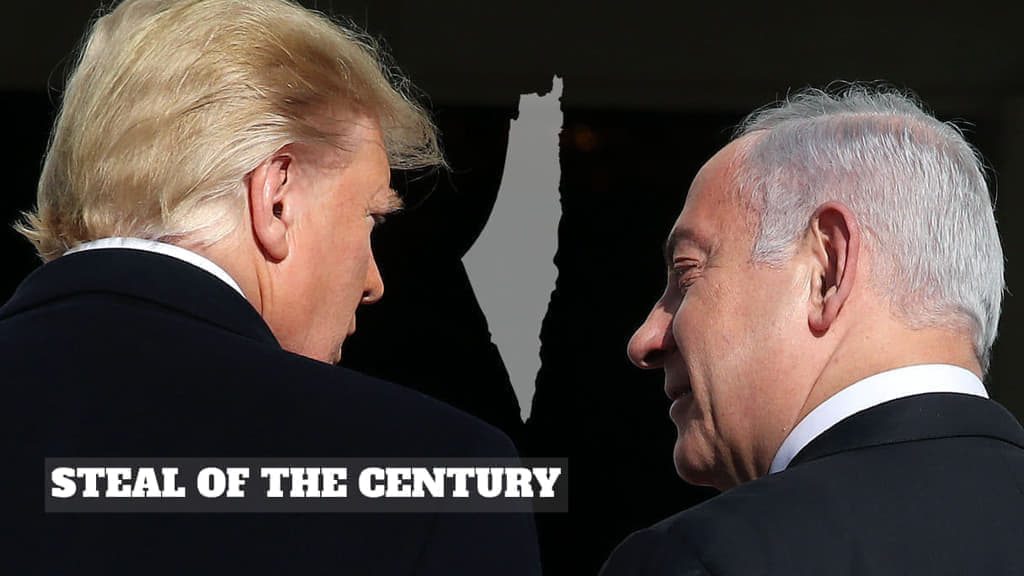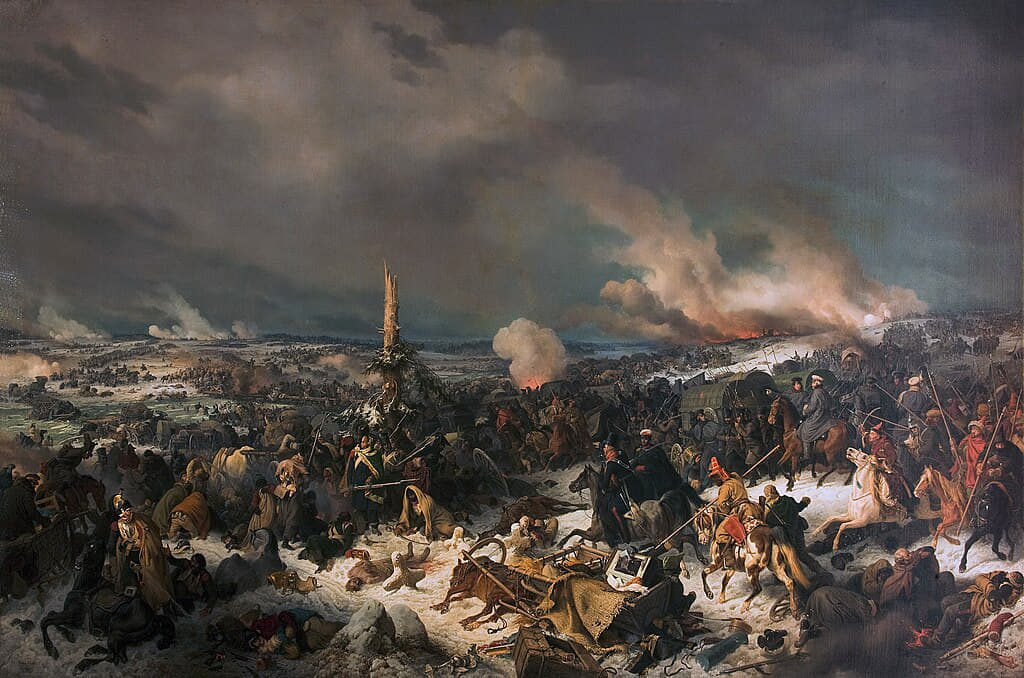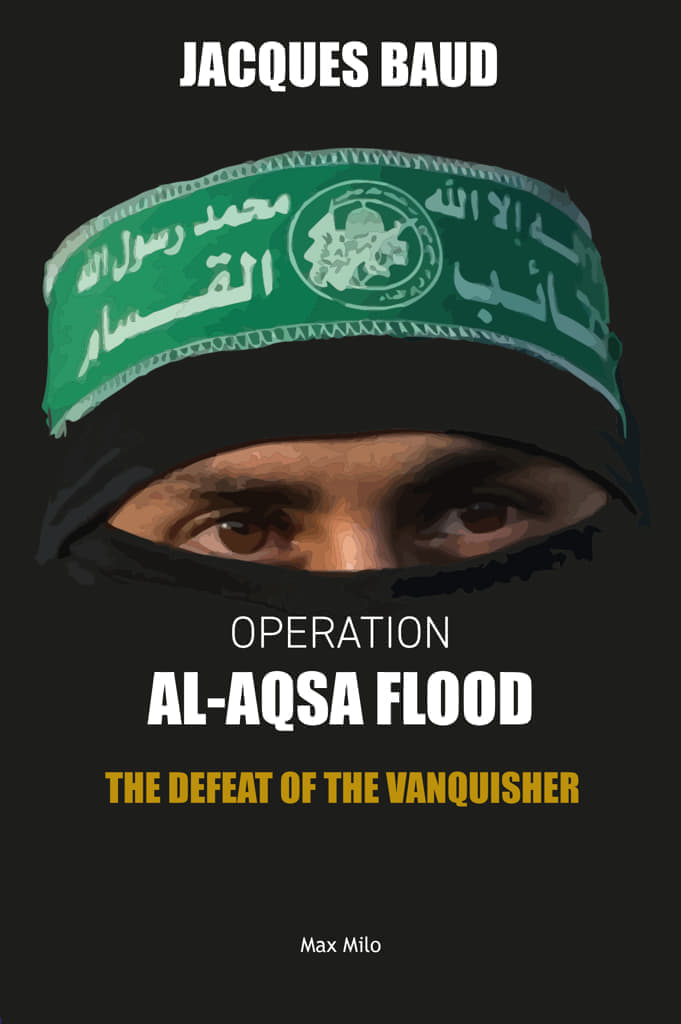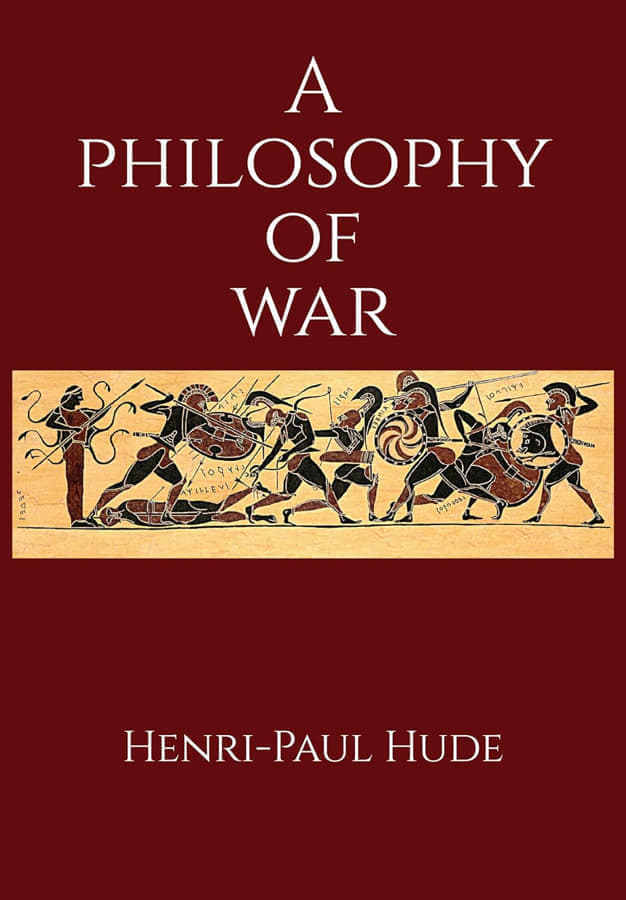We are pleased to bring you this excerpt from Colonel Jacques Baud’s latest book, which deals with the genocide in Gaza currently being carried out by Israel. The book is entitled, Operation Al-Aqsa Flood: The Defeat of the Vanquisher. We will update this page as soon as this book becomes available. in the meantime, here is the excerpt.
Doctrinal Apparatus Ill-Suited to an Asymmetrical Conflict
The BETHLEHEM Doctrine
This doctrine was developed by Daniel Bethlehem, legal advisor to Ben-jamin Netanyahu and then to British Prime Minister Tony Blair. It postulates that states are entitled to preventive self-defense against an “imminent” attack. The difficulty here is to determine the “imminent” nature of an attack, which implies that the terrorist action is close in time and that there is a body of evidence to confirm it.
In February 2013, NBC News released a Department of Justice “White Pa-per” defining “imminent:”
the imminent threat of a violent attack against the United States does not require the United States to have proof that a specific attack against American persons or interests will take place in the immediate future.
While the principle appears legitimate, it’s the interpretation of the word “imminent” that poses a problem. In intelligence circles, the “imminence” of an attack is defined in terms of its proximity in time and the likelihood of it taking place. But, according to Daniel Bethlehem, this is no longer the case here:
It must be right that states should be able to act in self-defense in cir-cumstances where there is evidence of imminent attacks by terrorist groups, even if there is no specific evidence of where such an attack will take place or of the precise nature of the attack.
In this way, a terrorist attack can be considered “imminent,” even if the de-tails and timing are unknown. This makes it possible, for example, to launch an air strike simply on the basis of suspicions of an imminent attack.
In November 2008, while a ceasefire was in force, an Israeli commando raid killed six people in Gaza. The explanation given by the Israeli army illustrates the BETHLEHEM doctrine:
This was a targeted operation to prevent an immediate threat […] There was no intention to break the ceasefire, rather the aim of the op-eration was to eliminate an immediate and dangerous threat posed by the Hamas terrorist organization.
This doctrine is similar to the one enunciated in 2001 by Dick Cheney, then Vice President of the United States, also known as the “Cheney doctrine” or the “1% doctrine:”
If there’s a 1% probability that Pakistani scientists are helping terrorists to develop or build weapons of mass destruction, we have to treat that as a certainty, in terms of response.
It’s the strategic/operational version of the Wild West “hip shot.” It’s symp-tomatic of the way we understand the law and the way we wage war: without values and without honor.
The problem with the BETHLEHEM doctrine is that it has been systematically used by Israel to justify ceasefire violations. This is true of extra-judicial kill-ings, which are not considered ceasefire violations. A study of Palestinian rocket attacks shows that they are always carried out in response to an Israeli attack, which does not generally appear in our media. From this stems our perception that Palestinian organizations—Palestinian Islamic Jihad and Ha-mas in particular—wantonly attack Israel with their rockets, and therefore engage in terrorist practices.
In its February 2018 report, the Human Rights Council (HRC) reports that during the Gaza border protests (Return Marches), the Israeli army shot dead 183 civilians, including 154 who were unarmed and 35 children. In February 2019, he reports that the Israeli army “intentionally” shot children, medical personnel (wearing badges and shot in the back!), journalists and disabled people. The Palestinian children shot by Israeli snipers with fragmentation bullets while simply standing in front of the border in Gaza in 2018, or the handcuffed and blindfolded Palestinian youth shot in the back in April 2019, are war crimes.
Israel’s supporters claim self-defence, but this is fallacious, as the videos published by the United Nations show. Firstly, because the victims were in a 150 m security strip inside Gaza, separated from Israel by a fence and a wide berm, from which Israeli snipers fire. Secondly, because those killed were “armed” only with stones, and thirdly, because some of those hit (notably children) were shot in the back.
So much for the world’s most moral army, which the United Nations has asked to stop shooting children.
The DAHIYA Doctrine
The Israeli army deliberately ignores the principles of international humani-tarian law and applies the “Dahiya doctrine,” drawn up by General Gadi Ei-senkot, now Chief of the General Staff. It advocates the use of “disproportion-ate force” to create maximum damage and destruction, and considers that there are “no civilian villages, these are military bases… This is not a re-commendation. It’s a plan.”
It’s a doctrine that presents itself as a deterrent, but contrary to Wikipedia’s assertion, it’s a tactic that can only work in a symmetrical context, i.e. when the action has a linear effect on weakening the adversary. In an asym-metrical context, where the determination of combatants depends on the brutality of their adversary, such destruction only serves to stimulate the will to resist and the determination to use a terrorist approach. This is the essence of jihad.
In fact, the very existence of this doctrine shows that the Israelis have failed to understand their adversaries and their operating logic. This explains why Israel is the only country in the world not to have mastered terrorism in three-quarters of a century.
In October 2023, the same logic will be applied. The British newspaper The Telegraph quoted Rear Admiral Daniel Hagari, spokesman for the Israeli army, as saying that for the strikes “the emphasis is on damage, not precision,” the aim being to reduce Gaza to a “tent city” by the end of the campaign.
***
The HANNIBAL Directive
Our media never mention the “HANNIBAL directive,” which came into force in 1986 in the Israeli army, designed to prevent Israeli prisoners from being used as bargaining chips by the Palestinians. It stipulated that those holding the prisoner were to be destroyed by any means necessary (including at the cost of the prisoner’s own life and that of civilians in the area). Applied during Operation PROTECTIVE EDGE, it was behind the total destruction of a Rafah neighborhood on August 1st, 2014, an event known in Palestine as Black Friday.
This directive seems to be still in use, naturally without much publicity. It ex-plains why the Israelis are not impressed by the hostages taken by Hamas:
The European diplomats were also struck by the lack of interest shown by the Israeli government in prioritizing the lives of the hostages held in Gaza.
Very soon after the start of the Hamas operation, Israel announced the deaths of 1,400 Israeli civilians. This number became a leitmotif for refusing any dialogue with Hamas and other Palestinian groups. But this number was revised downwards after 200 charred bodies were recognized as those of Ha-mas fighters. Then, on December 2, 2023, it was lowered again to 1,000 in a tweet from the Israeli government.
An Israeli air force colonel would later confirm that on October 7, a “free fire” was ordered from the air force, described as a “mass HANNIBAL.”
The HANNIBAL directive is applied not only in cases of hostage-taking, but also when soldiers are at risk of capture. For example, on January 24, 2024, near Khan Younès, a tank was damaged by rocket fire, and the Israeli military was unable to approach it to retrieve the three wounded crewmen. The gen-eral staff therefore preferred to bomb the tank and its occupants rather than risk them falling into the hands of Hamas.
In any case, we can see that the Israeli army applies the precautionary prin-ciple neither to the Palestinians nor to its own men. One could say with a cer-tain cynicism that, at least here, Palestinians and Israelis are treated equally.
In mid-December 2023, the discovery of three bodies in a tunnel in Gaza sparked controversy. They were three men held by Hamas, whom the Israeli army spokesman had declared killed by the Palestinian organization. They have no apparent injuries and appear to have been killed by poisoning. Were they killed by the deliberate use of a combat toxicant or accidentally by toxic fumes from explosions (such as carbon monoxide)? We don’t know, but the mother of one of them, Ron Sherman, believes he was deliberately sacrificed by the army. In any case, this illustrates the Israeli army’s failure to respect the precautionary principle.
Extrajudicial Executions
Extra-judicial executions are an important element in Israel’s policy of de-terrence against Palestinian movements. They consist of eliminating militants outside the judicial process, using killers or “one-off” strikes such as air attacks. Legally questionable, they are often strategically ineffective. Three countries use them regularly: the United States, Israel and France. Presented as a preventive measure, they are generally carried out in a punitive manner, like Sicilian vendettas, without any real assessment of their strategic conse-quences. In practice, they fuel a growing process of violence and are a source of legitimacy for terrorism. In fact, they often reflect a lack of real coun-ter-terrorist strategy.
The archetype of this mode of action is Operation ANGER OF GOD (Mivtza Za’am Ha’el), also known as Operation BAYONET, carried out by the Mossad to punish the perpetrators of the attack on the Israeli Olympic team in Munich in 1972 (Operation BERIM & IKRIT). Within a year, almost the entire Palestinian commando was eliminated: Wae Zwaiter (Rome, October 16, 1972), Mahmoud Hamchari (Paris, January 9, 1973), Abd El-Hir (Nicosia, January 24, 1973), Basil Al-Kubaissi (Paris, April 6, 1973), Ziad Muchassi (Athens, April 12, 1973), Mohammed Boudia (Paris, June 28, 1973), Kamal Nasser, Mahmoud Najjer and Kamal Adouan (Beirut, April 9, 1973). Its leader, Ali Hassan Sala-meh, was killed in Beirut on January 22, 1979, followed by his sec-ond-in-command, Khalil al-Wazir (alias Abou Djihad), on April 16, 1988 in Tunis. In the end, only one member of the group, Jamal al-Gasheï, seems to have escaped the wrath of GOD, while an innocent man was mistakenly killed in Lillehammer (Norway).
These actions are punitive operations. What our countries and Israel con-sider part of the game is called terrorism when others do it. By accepting it from Israel, we create a permissive environment that could well legitimize the elimination of some of our political leaders. Which could happen.
Since 1988, Israel has been using specially trained units to operate clandes-tinely in the occupied territories. Known as “mista’aravim” or YAMAS, these are ad hoc formations that operate clandestinely (in Arab clothing—hence their name) in the occupied territories for reconnaissance missions, comman-do actions or extra-judicial executions. Mista’aravim actions are mainly car-ried out in the West Bank by Sayeret Duvdevan (Unit 217).
The best-known of these was Mossad’s attempt to poison Khaled Mashal, political leader of Hamas in Jordan, in 1997. It ended in failure: the two Israeli agents carrying Canadian passports were arrested; then Israel had to provide an antidote and release Sheikh Ahmed Yassin in exchange for the release of his agents. The result was Israel’s loss of credibility with the international com-munity and the mistrust of Jordan—with which Israel has a peace treaty.
Mista’aravim are the equivalent of the Groupe Antiterroriste de Libération (GAL) units used in Spain in the 1980s, which are considered a form of state terrorism. However, the advantage of this type of action is that it can elimi-nate an individual without razing an entire neighborhood or destroying entire families. But it requires agents who are all the more competent and coura-geous because the Palestinians have strengthened their counter-espionage and internal security capabilities. This is why this type of operation has be-come almost impossible to carry out in Gaza, but is still common practice in the West Bank. In Gaza, Israel prefers to carry out its actions “at a distance,” using more sophisticated means such as drones or guided missiles, which have a devastating effect on the civilian population.
With some 2,300 known assassinations, Israel rivals the United States as the country that regularly assassinates opponents and terrorists. When carried out on foreign soil, an “elimination” is a complex operation, relying on a net-work of local informers (“sayanim”), most often recruited from the Jewish diaspora. But this has a perverse effect: it turns the previously well-integrated Jewish community into an object of distrust, perceived as a “5th column” in many countries of the Near and Middle East.
But extra-judicial executions not only carry a significant political risk if un-successful, they tend to legitimize illegal violence and terrorism, as evidenced by the Arabian Peninsula Jihad Base’s (APJB) Inspire magazine:
[The assassination of leaders of the civil and military unbelievers] is one of the most important arts of terrorism and one of the most advanta-geous and deterrent types of operation. These methods are also used by the enemies of Allah. The CIA has authorization from the US gov-ernment to assassinate presidents, if it is in the national interest of the United States, and they have used it more than once. In the CIA, there’s a special department for that! So I don’t know why we’re prevented from doing it?
This is a case of Islamist asymmetry: the “cure” is worse than the “disease.” The assassination of leaders has no dissuasive effect. It makes the dead a martyr and an example to follow. It hardly ever leads to the end of terrorist action, but keeps the flame of resistance alive and takes on more varied forms.
With highly decentralized structures, the elimination of cadres does not necessarily weaken the terrorist group, but it does force its hierarchy to renew itself more rapidly and apply new methods and policies of action. This is what happened with Hamas.
But on August 21, 2003, Israeli forces eliminated Ismaïl Abou Shanab. At the time, he was considered a Hamas moderate, and his assassination triggered widespread condemnation and an unprecedented mobilization of the Pales-tinian population. Attacks resumed in step with the eliminations carried out by Israel.
In September 2023, on the LCI channel, where journalist Darius Rochebin praises the assassinations carried out by the Ukrainian secret services, Gen-eral Christophe Gomart explains that France also carries them out. He is a perfect illustration of the Western way of thinking. Like the Israelis, he thinks it’s useful to shoot a leader “because in fact it’s the leaders who decide, and it takes longer to train a leader than it does to train an ordinary soldier,” so:
We destabilize, we disorganize, and the idea in war is to disorganize the adversary in order to weaken him and make it possible to win, and therefore to overthrow him… that’s what we did in the Sahel against the terrorist leaders: we sought to disorganize the terrorist or jihadist Not only does this illustrate a tactical approach to the fight against terror-ism, but it is not valid for highly decentralized insurgent structures, made up of small, quasi-autonomous groups. This partly explains the operational and strategic failure of French action in the Sahel.
This somewhat childish vision of war may work in a conventional conflict, but not in an unconventional context, and certainly not in a jihadist one. It flies in the face of what a British SAS officer told me during my counter-terrorism training in Britain during the war in Northern Ireland in the mid-1980s. The British had extremely detailed files and information on the various command-ers of the Irish Republican Army (IRA), down to knowing their every move. When I asked why they didn’t eliminate them, the officer replied:
Because we know them. We know their psychology, their families, their networks, their way of fighting, and we can better anticipate their ac-tions, even pre-empt them. If we kill them, others will come along, per-haps more effective, more aggressive, and we’ll know nothing about them.
Of course, such an answer is only possible when you have studied your op-ponent thoroughly and know him in great detail. The fact is that today, we know very little about our opponents. Even public figures like Vladimir Putin are so poorly known that he is diagnosed with illnesses he doesn’t have. It’s the same in Palestine.
Experience shows that extra-judicial executions have no operational effect. On the contrary, they encourage the spirit of vengeance and tend to mobilize the spirit of resistance. This phenomenon is all the stronger when civilians are killed in the process. They inspire contempt rather than admiration, as they represent a success not achieved in face-to-face combat. Moreover, as in the case of Operation Al-Aqsa Flood, the Israeli military are not fighting a “brave” battle. This is why these executions become a substitute for real suc-cess against terrorism. They therefore appear more as proof of weakness and incapacity than as a demonstration of effectiveness.
According to some (unconfirmed) reports, SHABAK has set up a clandestine unit, code-named INDIGO, whose mission is to hunt down the perpetrators of the crimes of October 7, 2023. But with evidence mounting that the vast majority of these crimes were the result of errors of conduct, the question of the extent to which this group will punish the real perpetrators of the massacres remains open.
***
Operation Al-Aqsa Flood
Strategic Objectives
Over and above the historical objectives of Palestinian resistance, which are aimed at creating a Palestinian state or returning to the land taken from them, the objectives of Operation AL-AQSA DELUGE essentially concern the situation in Gaza.
The operation’s central strategic objective is to end the blockade of the Gaza Strip and restore normal living conditions for the population. This includes the end of permanent surveillance by Israeli forces, restrictions on trade in goods, and measures that prevent economic and social development. This objective follows on from the “Marches of Return,” which were led by civil society, but were met with sniper fire.
Achieving this goal involved enabling objectives, the most important of which was to bring the Palestinian question back onto the international stage. In November 2012, the United Nations General Assembly granted Palestine the status of “non-member observer state of the United Nations.” Since then, however, no progress has been made in dealing with the Palestinian question, and the situation has even deteriorated with the arrival of Israel’s ul-tra-nationalists in power.
The second intermediate objective was to interrupt the normalization pro-cess between Israel and certain Arab countries. Not because of normalization itself, but because it sidelined the Palestinian question. The Palestinians had always wanted these issues to be linked, so that there would be leverage to force Israel to implement UN decisions.
The third intermediate objective was to rally the Muslim community around the issue of the future of the Esplanade of the Mosques (or Temple Mount), which is closely linked to the Palestinian question. As Ihsan Ataya, a mem-ber of the political bureau of the Palestinian Islamic Jihad (PID) and head of the PID’s Arab and International Relations Department states:
The aim of Operation AL-AQSA RELIEF was stated from the outset: to prevent the Al-Aqsa Mosque (in Jerusalem) from being attacked, Muslim religious rites from being insulted or defamed, our women from being assaulted, efforts to Judaize the Al-Aqsa Mosque and normalize its occupation by Israel from being implemented, or the mosque from being divided in time and space.
It has to be said that, while the blockade of Gaza has not been lifted, these three intermediate strategic objectives have been at least partially achieved. To what extent they will lead to a lasting and just solution to the Palestinian question is an open question, but Hamas has clearly underlined the responsi-bility of the international community to enforce the decisions it has taken.
Operational Objectives
First Objective: The Gaza Division
The first objective was to destroy the elements of the Gaza Division and the surveillance installations encircling the Gaza Strip. On October 12, Abu Obeida, spokesman for the Al-Qassam Phalanges, explains:
Operation AL-AQSA DELUGE was aimed at destroying the Gaza Division, which was attacked at 15 points, followed by 10 more. We attacked the Zikim site and several other settlements outside the Gaza Division headquarters.
This objective may seem outdated to us, since it was clear from the outset that the Palestinian operation could not maintain its momentum for very long, and that the fighting would necessarily continue in the Gaza Strip itself. Con-sequently, the destruction of infrastructure could only be temporary, but highly symbolic.
To understand this, you have to put yourself in the Palestinians’ software. Victory is not achieved by destroying the adversary, but by maintaining the determination to resist. In other words, whatever the Israelis do, however much destruction and death they cause, the Palestinians have already emerged victorious from this operation. Faced with a numerically and materi-ally stronger adversary, victory in the Western sense of the term is not possi-ble. On the other hand, overcoming fear and feelings of powerlessness is al-ready a victory. This is the very essence of the notion of jihad.
Consequently, all the humiliations the Israelis can inflict on their prisoners or the civilian population can only make the Palestinians feel better, and lower the military’s thirst for vengeance. In fact, this is what is happening around the world: the Israelis are obliged to use their censorship to hide the crimes com-mitted by their soldiers, and the idea of “the most moral army in the world” is now totally discredited.
Second Objective: Take Prisoners
The second objective was to seize prisoners in order to exchange them for those held by Israel. Very quickly, testimonies in the Israeli press showed that the aim of the Hamas and Palestinian Islamic Jihad (PID) fighters was not to carry out a “pogrom,” but to seize soldiers in order to exchange them for Pal-estinians held by Israel. The aim was to gain leverage to resume the negotia-tions interrupted by the Israeli government in November 2021. Since then, it has been known that Hamas would carry out such an operation. The depu-ty chief of staff of the Al-Qassam Phalanges, Marwan Issa, had declared that “the prisoners’ file will be the surprise of the enemy’s next surprises.”
Clearly, the aim was not to kill civilians, but rather to obtain a bargaining chip for the release of some 5,300 prisoners held by Israel. Eyewitness ac-counts in the Israeli press suggest that the original idea was to take only mili-tary prisoners (who are “more valuable” than civilians for an exchange). These same accounts show that the Palestinians were surprised to find so few mili-tary personnel on site, which can be explained by the fact that part of the gar-risons had been redeployed to the West Bank a few weeks earlier. Yasmin Porat’s testimony, mentioned above, shows that Hamas fighters stayed with civilians in their homes, waiting for the security forces to intervene. The testi-monies indicate that the Palestinian fighters left with civilian prisoners only after the Israeli military had intervened, firing indiscriminately into the houses with their tanks. It therefore appears that the capture of civilians was more the result of a combination of circumstances than a decision taken in advance.
The death of civilians was therefore not an objective, and the fact that the freed hostages declared that they had been treated with respect, and even in a friendly manner, tends to confirm that this was not a “pogrom” against the Israeli population.
The prisoner exchanges of November 2023 illustrate Hamas’s strategy, at the heart of which were military prisoners, not civilians. That’s why the Pales-tinians released the women and children first, and kept the military (especially the top brass) for later. We’ll come back to this later.
Tactical Objectives
The Hamas attack targeted 25 military objectives located in the “Gaza en-velope.” The three main tactical objectives of the operation were:
- the Zikim naval base in the north of the Gaza Strip, which was attacked by Hamas marine commandos, who resisted Israeli counter-attacks for several days;
- the Erez checkpoint, in the north of the Gaza Strip, which manages part of the fence’s surveillance facilities; the Gaza Division command post at the Re’im site, where the heaviest fighting will take place on October 7; and the Urim intelligence center some 17 km from the Gaza Strip, in order to damage Israeli surveillance installations.
- A document discovered near Kibbutz Mefalsim, 2 km from the Gaza Strip, containing data on the number of soldiers and security forces, shows that the operation was meticulously prepared and directed against military installations.




